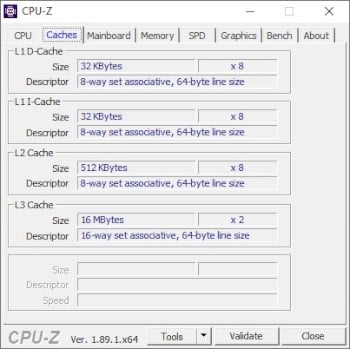Ryzen 9 3900X And Ryzen 7 3700X: Zen 2 Arrives With A Bang
AMD has been extolling the virtues of Zen 2 for quite some time, but in the last few weeks the company has really turned up the heat and revealed some exciting details, like single-thread performance on-par with Intel’s best, enhanced multi-threaded performance, and huge amounts of cache to keep as much data as close to the CPU cores as possible while improving overall performance and reducing latency.
We were able to disclose Zen 2’s deeper architectural details, shortly after AMD’s Next Horizon event last month. We suggest giving that article a read to lay the foundation for what we’ll be showing you here today. In our Zen 2 coverage, we explain how virtually every piece of IP in Zen 2 has been optimized or streamlined to enhance performance and efficiency. We cover everything from the new TAGE Branch Predictor to the integer and floating point units, cache hierarchy, faster memory support, and more. Because we’ve already dug into the architecture in that previous article, we won’t do so again here, and will instead focus on the products themselves and their performance, of course. We know many of you have been itching to see the numbers, so let’s get to work...
|
Technically there are seven processors launching today, but only five of them are true-next gen parts. The Ryzen 3 3200G and Ryzen 5 3400G are tweaked, second-gen processors with 3000-series branding. The Ryzen 5 3600 on up to the Ryzen 9 3900X are the new Zen 2-based successors to 2nd Generation Ryzen processors, based on a new architecture, with a redesigned cache structure, and support for PCI Express 4.0. In September, AMD's beastly 16-core, 32-thread Ryzen 9 3950X will also be released.
From the outside, 3rd Generation Ryzen 3000 series desktop processors look just like their predecessors. They use the same AM4 socket, and even coolers and heat-spreaders are unchanged – except for the actual branding etched into their surfaces. From the top and bottom, there’s not much to see that’ll appear any different than current Ryzen processors, and that's a good thing.
Underneath their heat-spreaders, however, 3rd Generation Ryzen 3000 series processors are a completely different animal. The CPU cores are grouped into 8-core chiplets manufactured at 7nm, each with dual, four-core compute complexes (CCX), that link to an IO die (manufactured at 12nm) that houses the memory controller, PCI Express lanes, and other off-chip IO. Instead of having one large die like most previous-gen processors, the Ryzen 3000 series is comprised of chiplets, linked together via AMD’s Infinity Fabric.
If you check out the CPU-Z details for the new Ryzen 9 3900X and Ryzen 7 3700X, you’ll see that the chips are code named “Matisse” and they’re the first stepping in revision MTS-B0. In terms of their configuration, the processors have 32K of L1 data cache per core, and 32K of L1 instruction cache per core, which is actually half that of second-gen Ryzen. The updated L1 cache, however, has 8-way associativity. The 512K of L2 cache per core is also 8-way associative, and there is 16MB of shared L3 cache per CCX, which is 16-way associative. On the 12-core (24-thread) Ryzen 9 3900X, that brings total cache to a whopping 70M, while the 8-core processors max out at 36MB.
Like all other modern processors, frequencies and voltages scale up and down dynamically based on the given workload, hence the funky clocks and voltages in the above screenshots. We should note that Ryzen 3000 series processors can ramp clocks faster than previous-gen parts with the proper OS and driver support, which in turn can further enhance performance.
The Ryzen 9 3900X, which has a 105 Watt TDP, has a base clock of 3.8GHz and max boost clock of 4.6GHz, while the 65 Watt Ryzen 7 3700X clocks in at 3.6GHz and 4.4GHz. Let's look at a few new AMD X570 motherboards to go with these new AMD Zen 2 processors...












